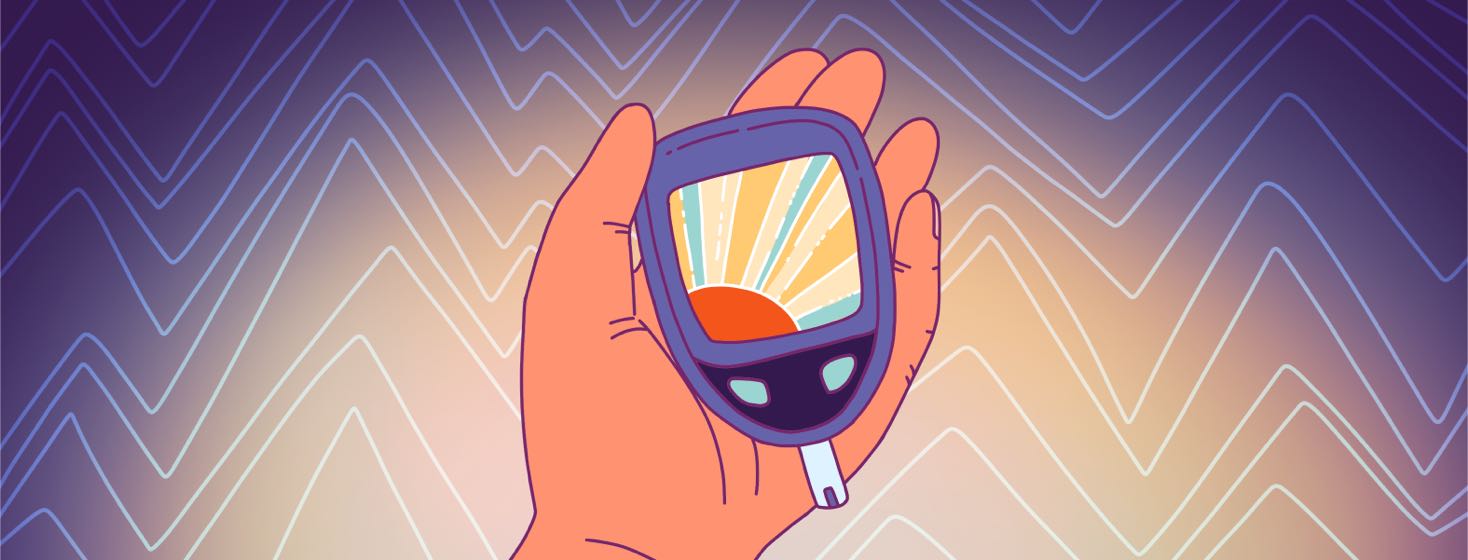High Morning Blood Sugars: What Is the Dawn Phenomenon?
Reviewed by: HU Medical Review Board | Last reviewed: November 2022 | Last updated: June 2024
People with diabetes have trouble converting food into energy. When you eat, your body breaks down food into a sugar called glucose. Glucose messages your pancreas to create insulin. Then, insulin lets the glucose into your cells to be used as energy.1
In people with diabetes, the sugar stays in their blood after they eat rather than being used for energy. This can cause a variety of issues. But some people experience high blood sugar right after they wake up despite not eating since the night before.1-3
This elevation of blood sugar in the mornings is called the "dawn phenomenon." These increases in blood sugar can be confusing – and, in some cases, concerning. But there are ways to monitor and treat the dawn phenomenon to keep your blood sugar where it should be.2,3
What is the dawn phenomenon?
The dawn phenomenon in people with diabetes refers to a period of high blood sugar right after waking up from nighttime sleep. This period usually lasts through the earliest hours of the day, until around 8 in the morning.2,3
The dawn phenomenon has been seen in people with type 1 and type 2 diabetes. More than half of people with diabetes experience some kind of dawn phenomenon throughout their life.2,3
There is also a version of the dawn phenomenon called the extended dawn phenomenon. This occurs when the early morning spike in blood sugar continues into the later hours of the morning. Both types of the dawn phenomenon can cause elevated A1C levels over time. So that makes both types very important to control.2,3
How is it diagnosed?
If you notice that your blood sugar is high when you wake up, your healthcare team can monitor your blood sugar throughout the day with a continuous glucose monitor (CGM). They will look at your glucose levels overnight and right before breakfast. By comparing these levels, they can see the extent of the dawn phenomenon.2,3
Why does the dawn phenomenon happen?
When your body is starting to wake up in the morning, it goes through changes. Hormones like cortisol and growth hormone send a message to your body to start producing sugar in order to help wake you up.2,3
For people with diabetes, these sugars cannot be broken down by insulin, so they stay in the bloodstream and cause a period of high blood sugar immediately after waking.2,3
Oftentimes, the dawn phenomenon happens when you are first diagnosed with diabetes. Sometimes your insulin pump is not tuned to give you enough insulin overnight, or a dose of long-acting insulin does not last until the morning. Any of these can contribute to the dawn phenomenon.3
How is the dawn phenomenon managed?
Exactly how you manage the dawn phenomenon is up to you and your doctor. But there are a few established ways to keep early morning blood sugar in check.
It is possible that an earlier and larger dose of insulin could work. Everyone with diabetes has their own specific insulin regimen. But insulin therapy can be an effective treatment for the dawn phenomenon and especially the extended dawn phenomenon.2
There are also other ways to help manage early morning spikes in blood sugar. Exercise and an early morning meal can both help keep glucose in check. Whatever you and your doctor decide, avoiding consistent blood sugar highs is crucial for both type 1 and type 2 diabetes management.2,3

Join the conversation